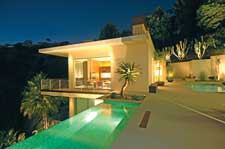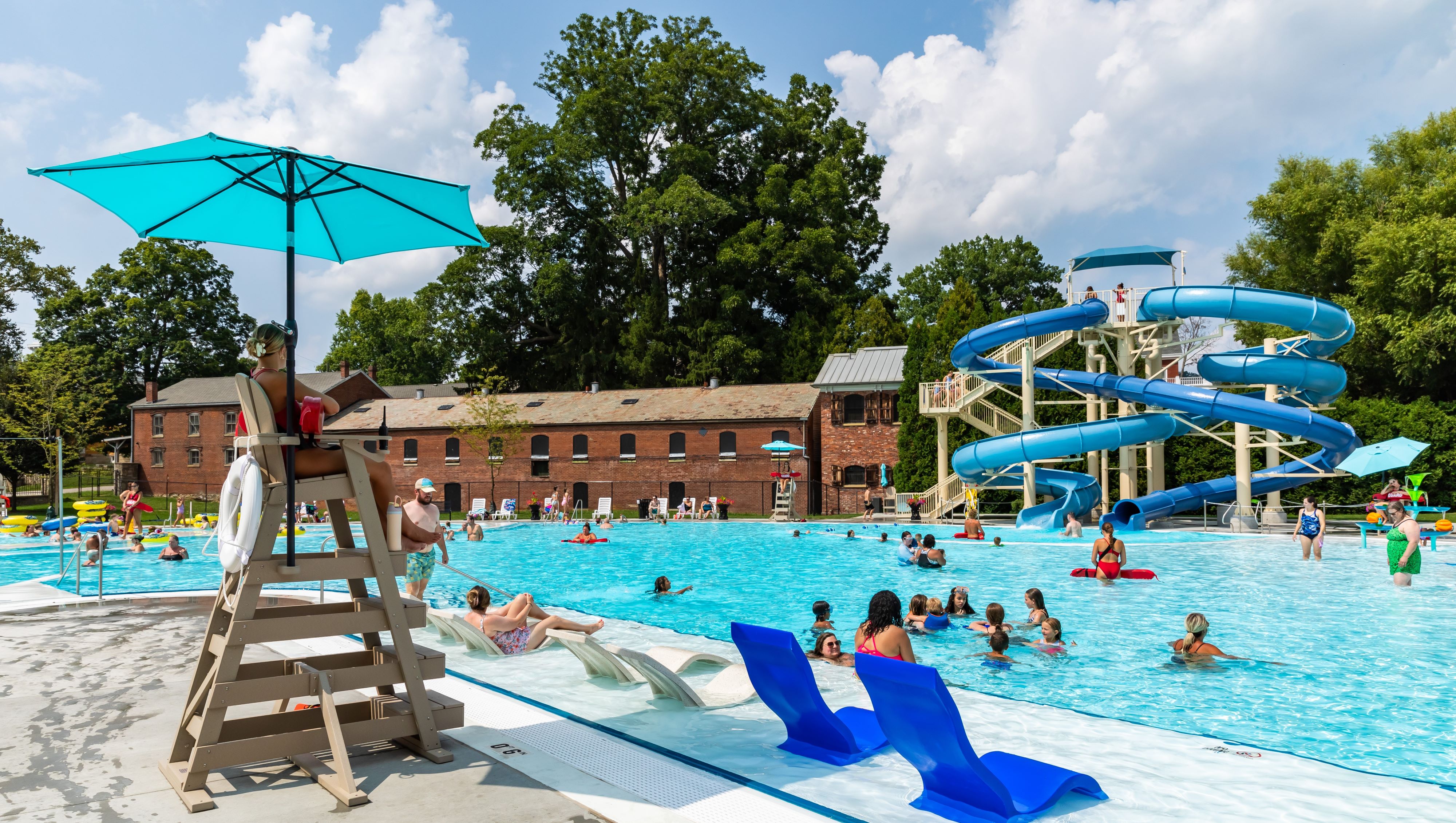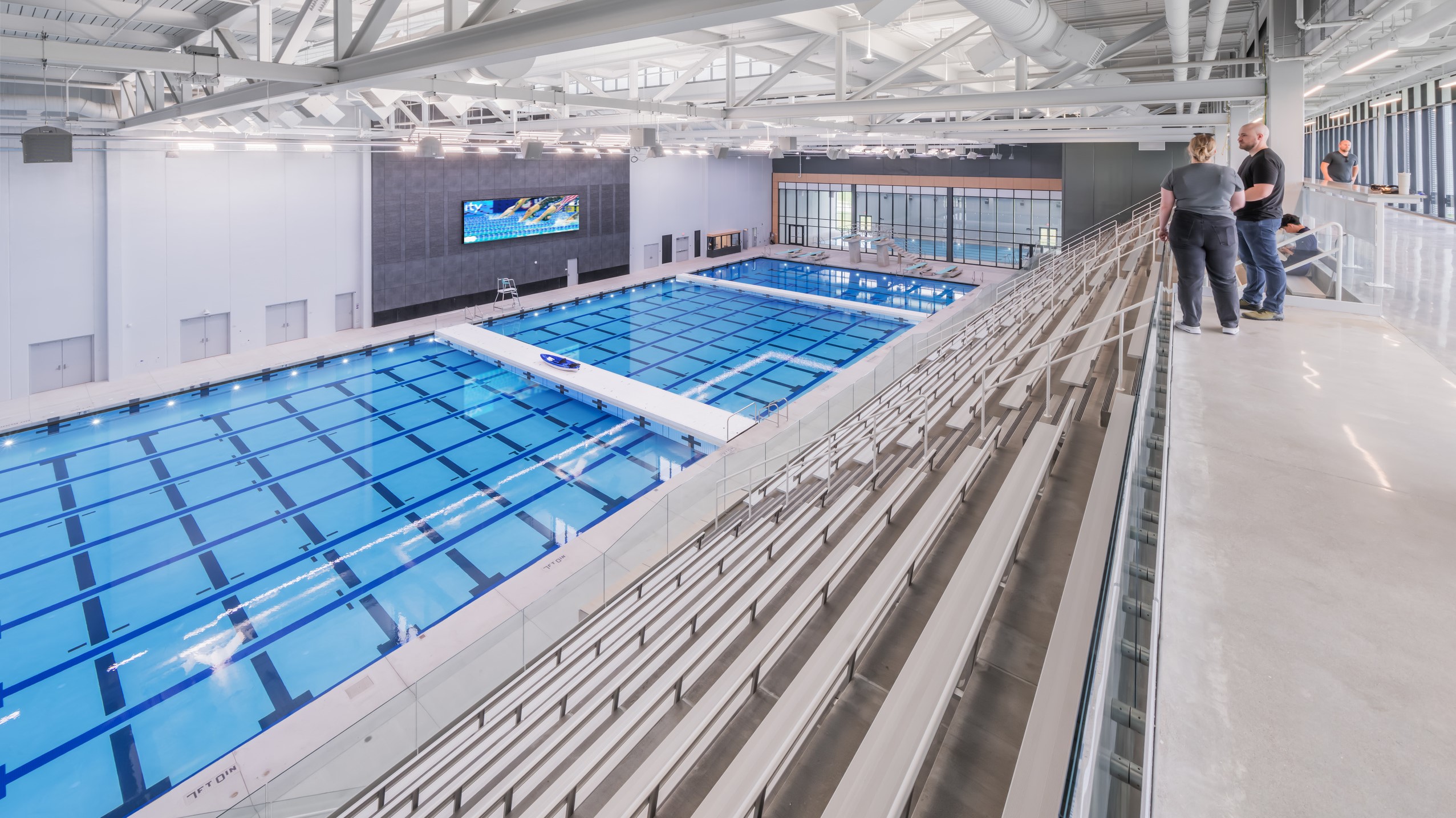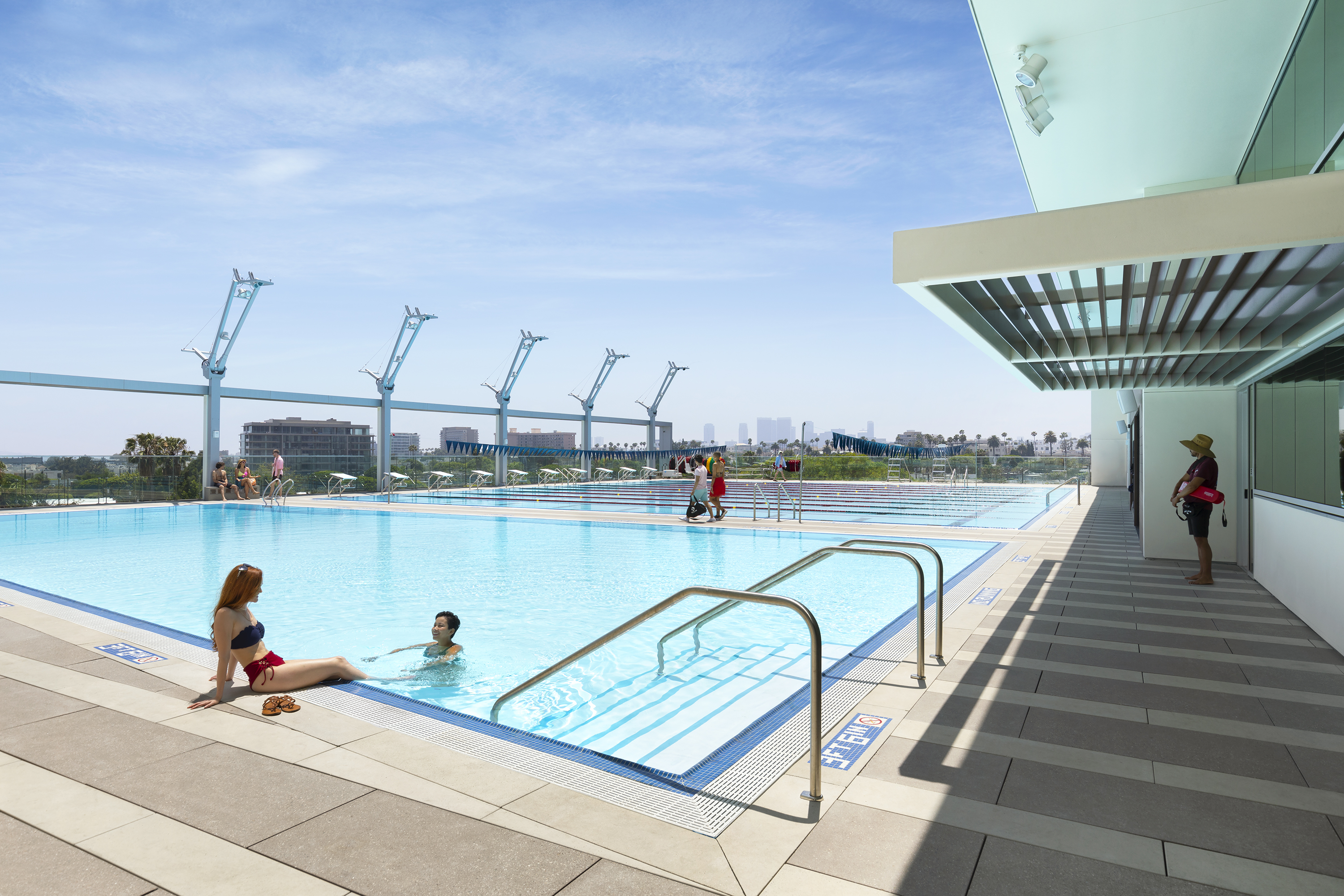THE CANVAS: Skyscraping pine trees, shapes of ’70s Hollywood, a secret view
THE PALETTE: Crisp clean lines, soothing shades of emerald, rich flecks of copper
THE MASTERPIECE: A breathtaking spa overlooking an unblemished cityscape, a project that blurs the line between indoor and outdoor spaces
Brett Barrett views the world through a different lens. As principal of Brett Barrett Inc., the self-described “house-a-holic” finds inspiration in everything he does. “I’ve gotten an idea for a roof line watching a can come off a can opener,” he says. “Coming over the hill on the 405 Freeway and seeing the traffic in a certain configuration, I’ll think, ‘That could be the edge of a building.’”
That’s why when Barrett came across a 2-acre lot on Los Angeles’ famed Sunset Strip, he didn’t notice the dark, deteriorating home or the sea of monstrous pine trees that had swallowed the yard. Instead, he envisioned something spectacular.
“Almost from the moment I arrived, I started to see the house I would end up building,” says Barrett, who admires the work of Spanish architect Santiago Calatrava. “I just don’t understand why, with so much variety available today — so many materials and choices — we continue to see the same things over and over again.”
Within a few months, he began work on the $20 million residence. The property includes a main home, guest house, swimming pool, wet-edge spa, entryway koi pond and more. To overcome the site’s challenges and achieve the spa’s structural wonders, Barrett tapped the skills of Ken Thomason, owner of Thomason Pool Construction.
A Hollywood face-lift
When Barrett first came across the overgrown site, it contained a ’70s era, Santa Fe-style house and simple geometric pool.
“The house was dark and narrow, with vertically slotted windows,” he says.
“It was compartmentalized, and the pool had an Aztec bird tiled in it using a burnt brown-and-black tile, [which was] unappealing. The whole property was dreary.”
Peeking through the trees, however, Barrett was wowed by the hilltop lot’s dramatic views of Los Angeles. His first order of business: Let the site breathe. He cleared out the trees and tore the home down to its foundation.
The soil posed another problem. Unlike the rest of the Hollywood Hills area, which contains ideal decomposed granite soil, this particular site was topped with fill dirt, meaning that pilings had to be embedded deep into the earth for support.
A 70-vehicle crew under the guidance of Los Angeles general contractor GW Associates worked on site six days a week for nearly 20 months to complete the project. A 200-foot retaining wall was constructed at the base of the hills around the space, taking care to avoid harming three mature cacti on the site.
The pool’s shell was modified during this phase. One of the corners was clipped and Barrett wanted to square out the vessel’s shape. “It was originally shaped like that because a county water line ran through it. So we designed a sun shelf with a depth of 3 inches to cantilever over the county line, but put no load on it,” Thomason says.
To make the pool more functional, the shallow end was extended and benches were formed along the perimeter. The unnaturally steep steps were altered to create a more graceful entrance with longer treads.
Miles of tiles
Still, the space was incomplete. “There was a corner where the living room of the main house looked west and the guest house family room faced south, and those points crossed each other,” Barrett says. “That space seemed so vacant to me, but it was also the most premium corner on the property because of the view of the ocean and sunsets.”
That’s where Barrett built a massive negative-edge spa as a unifying force between the two buildings. The location, however, was complicated by a straight drop-off. Thick caissons were inserted 41 feet into the ground to support the spa, which was built “in the air,” Thomason says.
With its 52 jets and seating for nine, the spa ranges in depth from 3 1/2 to 6 feet and is 19 feet long. Fully finished with a striking, tricolor blend of emerald Bisazza tile, the spa’s 13-foot-tall exposed weir wall rests majestically in the corner of the lot.
A lower deck area invites guests to relax at the foot of the catch basin. “You can sit there with the water coming down the wall, and it’s just breathtaking,” says Thomason, who enjoys working with glass tile.
The spa was accessorized with a side trough, mounted flush with the deck to hold cold drinks. Fiberoptic lighting inside the spa and traditional uplights in the catch basin create drama in the evening.
“When the spa is lit at night, you get a great deal of color,” Barrett says. “With the California sun, if that spa wall was plastered, it wouldn’t be nearly as appealing.”
An accent piece
The spa’s green tile also was used to decorate the pool’s steps, waterline and tanning ledge, making it the color of the Caribbean Sea.
“I didn’t want two bodies of water that looked the same. My transitional element from the brilliant green spa to the darker, copper-toned pond is the pool,” Barrett says.
The pond acts as an entryway waterfeature. A 2-ton chunk of granite was carved and hollowed to serve as the bubbler, which spills into a koi pond below. “The koi pond also has a negative edge,” Barrett says. “The water spills onto a bed of pebbles held up with a grate. Then there’s a 2-foot drop from the grate to the catch basin.
“The drop has created a pleasant babbling brook sound, as if you’re sitting next to a running creek,” he adds.
To complete the environment, Barrett opted for a concrete deck that was brushed to reveal some of its aggregate. Mature cacti and succulents were brought in from a Malibu nursery. “The plantings went with the limestone used on the exterior of the house,” Barrett says. “The stone was quarried in Jerusalem. The cactus and succulents, which may not seem lush, look lush in front of this stone because of its coloring and texture.”
An outdoor shower, barbecue and landscape lighting make poolside entertaining a breeze. The kitchen’s glass doors slide open onto the yard, eliminating the need for a separate outdoor kitchen.
“With the wonderful climate we have in Southern California, you want the indoors and the outdoors to just fade into each other,” Barrett says.
“Spending time in this space,” he adds, “I found myself moving around and forgetting whether I was inside or outside.”



